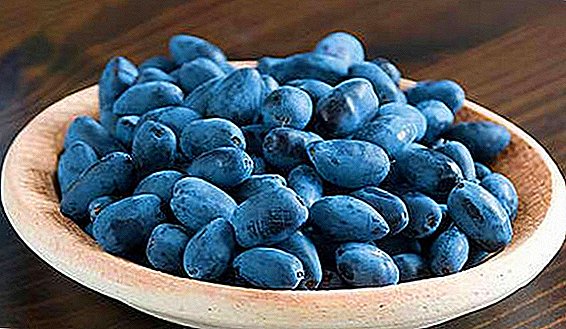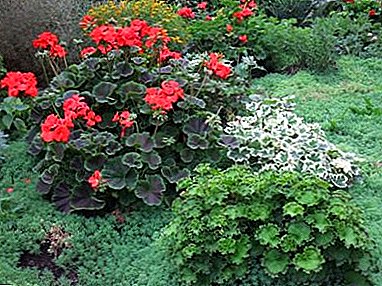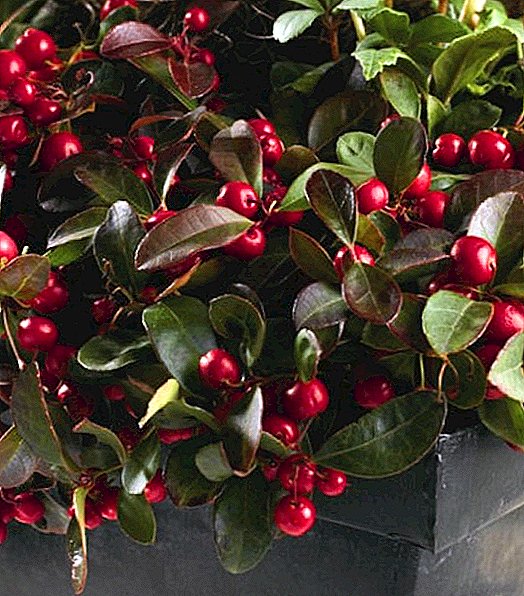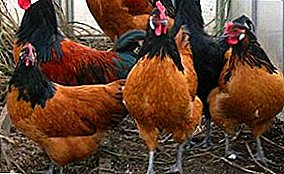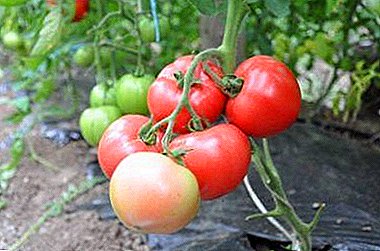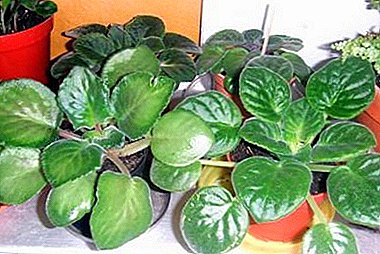 Today in the world, according to statistics published by the UN, there are 84 breeds of domestic ducks. All of them are divided between 3 areas: meat, meat, egg and egg. The poultry breeder should choose a breed for domestic keeping according to his goals - obtaining meat, meat and eggs, or only eggs. We want to introduce you to the representative of the meat species - Hungarian duck. About its advantages, disadvantages and conditions of detention, read our article.
Today in the world, according to statistics published by the UN, there are 84 breeds of domestic ducks. All of them are divided between 3 areas: meat, meat, egg and egg. The poultry breeder should choose a breed for domestic keeping according to his goals - obtaining meat, meat and eggs, or only eggs. We want to introduce you to the representative of the meat species - Hungarian duck. About its advantages, disadvantages and conditions of detention, read our article.
Origin of the cross
Hungarian duck is cross from two hybrids - meat-egg cherry-rally (X-11) and meat mulard. Such valuable qualities as excellent taste and high yield of meat, rapid weight gain, strong immunity passed from the mulardov to the new breed, and good egg-laying, good preservation of young animals from cherry-velli.
Standard and breed description
Features of the Hungarian duck - a large massive body, strong skeleton. The chest is well protruding forward, the back is quite wide. The head is large in size, located on a long arched neck. Beak - long, wide, variegated. In 30% of the ducks of this breed, the color of the feathers is variegated; about 70% of the birds have feathers painted white.
Did you know? The ducks of both male and female complex structure of the genitals. The phallus of the male has a spiral shape, resembling a corkscrew, and can reach the length of the body. Spiral-shaped and ovary females. At the end of the mating season, the genital of the drake decreases in size. An erection in the drakes occurs in a record short time — 0.3 seconds.
Characteristics of breed productivity
These ducks are very quick and quickly gaining weight. Therefore, already at a rather young age - at 2 months - they have a body with a mass of 3.5-4 kg. Adult dragons weigh 4.5–5 kg each; females weigh 3.5–4.2 kg. Meat is high quality, dietary and juicy.  Egg production at this cross is average - up to 100 eggs per year.
Egg production at this cross is average - up to 100 eggs per year.
It is interesting to learn about the beneficial properties and use of duck eggs, meat, fat.
The merits of a Hungarian duck
Among the advantages of the Hungarian cross poultry farmers are the following:
- high-quality meat, distinguished by juiciness and low level of fat (about 7%);
- quick weight gain;
- decorative plumage;
- unpretentious care;
- unpretentiousness to feed;
- resistant immune system;
- good ability to adapt to life in all conditions.
Did you know? In China, the duck serves as an emblem of loyalty.
Disadvantages duck Hungarian
The disadvantage of this poultry, perhaps, can be identified only one - lack of instinct incubation. Independently with the help of females to update the livestock will not succeed, be sure to need an incubator. 
Breeding Hungarian at home
It is not difficult to breed a Hungarian duck: it will survive under any circumstances, it has good health and no food preferences. However, in order for a domestic waterfowl to delight you with high productivity, you should create comfortable conditions for it in the form of rational food, a clean, spacious utyatnik, places for walking and swimming.
Read also about the characteristics and content of duck crosses: tempo, agidel, deceitful white, old-53.
Nutrition and feeding
The quality of meat and the number of eggs will directly depend on how and what to feed the duck. When birds are fattened for meat, they are given food twice a day if there is a place for walking and three times in the absence of one. In the morning, wet mashes fall asleep in the trough, in the evening - grain.
Hungarians are not picky and can be content with mixed fodder (grain) and greens (1/3 of the whole mass of feed). However, you can diversify their menu, including vegetables and animal products.
For example, during the egg-laying period, the approximate daily ration of one individual in winter may look like this.:
- grain flour - 120 g;
- wheat bran - 30 g;
- legume flour - 15 g;
- alfalfa flour - 20 g;
- greens - 100 g;
- germinated grain - 16 g;
- steamed potatoes - 50 g;
- carrots - 25 g;
- ground bones - 10 g.
 In the summer period, when ducks can walk for a long time and look for food themselves, grain and bean flour, bran and bones are left in the menu.
In the summer period, when ducks can walk for a long time and look for food themselves, grain and bean flour, bran and bones are left in the menu.
It is imperative that gravel, river sand should always be in a separate feeder - they help to improve the digestion of birds. Shells or chalk are also added as minerals.
Learn how to make a variety of do-it-yourself duck feeders.
In constant access to the ducks should be drinking bowl with fresh and clean drinking water. Water should always be changed daily and as it is polluted. You can avoid contamination by installing high-quality and convenient drinkers.
Among the products that are allowed for ducks:
- corn;
- wheat;
- barley;
- oats;
- legumes;
- cake and meal;
- bran;
- yeast;
- bread;
- greenery;
- vegetables;
- a fish;
- dairy products.
 It is undesirable to give the birds the usual flour, house it in the mash. It will sodden and stick together. It is also forbidden to enter into the feed:
It is undesirable to give the birds the usual flour, house it in the mash. It will sodden and stick together. It is also forbidden to enter into the feed:
- moldy bread;
- milk cereals;
- fresh milk;
- maple leaves.
Important! With the introduction of green fodder it is necessary to ensure that poisonous herbs do not accidentally get into the feed. Nettles should always be boiled before they are placed in the feeder.
Ducklings are fed 7-8 times a day in the first week after birth, 5-6 times on the second, from the 15th day and upon reaching the month you can transfer them to 4-5 times a day. Fattening is recommended to continue no longer than 2.5 months.
For babies up to 10 days, there should be wheat and corn flour, millet, boiled eggs, powdered milk, fish oil, bone, meat and bone meal and fish meal in the menu. The total mass of feed per individual is 30-31 g. After 10 days and attaining one month of age, the amount of feed is increased to 130 g, and in the menu they introduce grain, salt, sunflower oilcake, and shells. From 30 to 50 days of bird life, the amount of feed should be calculated from the recommendation of 220 g per individual. 
Bird care
It is desirable that the ducks had grassy walking place. Birds contained in such conditions will surely be distinguished by strong immunity, excellent physical activity and a beautiful exterior.
With a small herd, vaccination may not be required. To prevent infectious diseases and epidemics from developing in the herd, preventive measures and regular cleaning of the duckling should be carried out. General cleaning and disinfection is carried out every summer after the completion of egg-laying.
In the presence of a large herd, vaccination against viral hepatitis and pasteurellosis is mandatory. The first is carried out at the age of 10 weeks, the second at 20 weeks.
Learn more about domestic duck diseases.
Conditions of detention
In order to avoid the development of diseases and for the comfort of birds, they are accommodated in the Utyatnik 3 individuals per 1 square. m. The floor in the room where ducks are kept can be any. It is important to pay attention to the litter on it. As a rule, it is made from straw, sawdust. In winter, it is scattered with a thick layer, not less than 40 cm, in the summer - with a thinner layer: 5-10 cm. The litter requires regular replacement - 2 times a year, in spring and autumn.  Ducks can transfer accommodation in a duckling, where the temperature in winter is not lower than 5 degrees. However, for better productivity and hygiene it is better heat and warm. In winter, the optimum temperature is 14 degrees above zero.
Ducks can transfer accommodation in a duckling, where the temperature in winter is not lower than 5 degrees. However, for better productivity and hygiene it is better heat and warm. In winter, the optimum temperature is 14 degrees above zero.
Important! Take care of dryness in the room where ducks are kept, as they react very poorly to damp conditions.
In order to keep the air dry and have normal air circulation, equip with high-quality ventilation. Good lighting will be needed only if you want to get the maximum egg production from the duck. Light day should be at least 9-12 hours. In the spring, it is increased by 2-4 hours. The recommended window area in ducklings is 1: 6 with respect to the proportion of the floor.
In order for a duck to have good health, it is necessary to ensure that daily walking and swimming in the open water.
Check out the guidelines for building a barn for ducks and a pond at the site.
Ducklings are kept separately from adults. For them, equip a special fence with a density of 18-25 kids per 1 square. m. Chicks should be warm, carefully protect them from moisture and drafts. Most often, the heating of the room where the kids are located is produced using electric heaters. You can bathe them only upon reaching 2 weeks of age.  Thus, Hungarian ducks are a good option for keeping at home, suitable even for beginners in this business. Hungarian quickly gaining weight, give excellent tasty and lean meat, do not require any special care. They are well adapted to any climate, they can be content with unpretentious food. According to poultry farmers who have already dealt with growing this cross, if you follow the recommendations for their maintenance and feeding, in record time (2 months) and at fairly low cost you can achieve an excellent result - 4 kg of meat with a minimum percentage of fat.
Thus, Hungarian ducks are a good option for keeping at home, suitable even for beginners in this business. Hungarian quickly gaining weight, give excellent tasty and lean meat, do not require any special care. They are well adapted to any climate, they can be content with unpretentious food. According to poultry farmers who have already dealt with growing this cross, if you follow the recommendations for their maintenance and feeding, in record time (2 months) and at fairly low cost you can achieve an excellent result - 4 kg of meat with a minimum percentage of fat.


